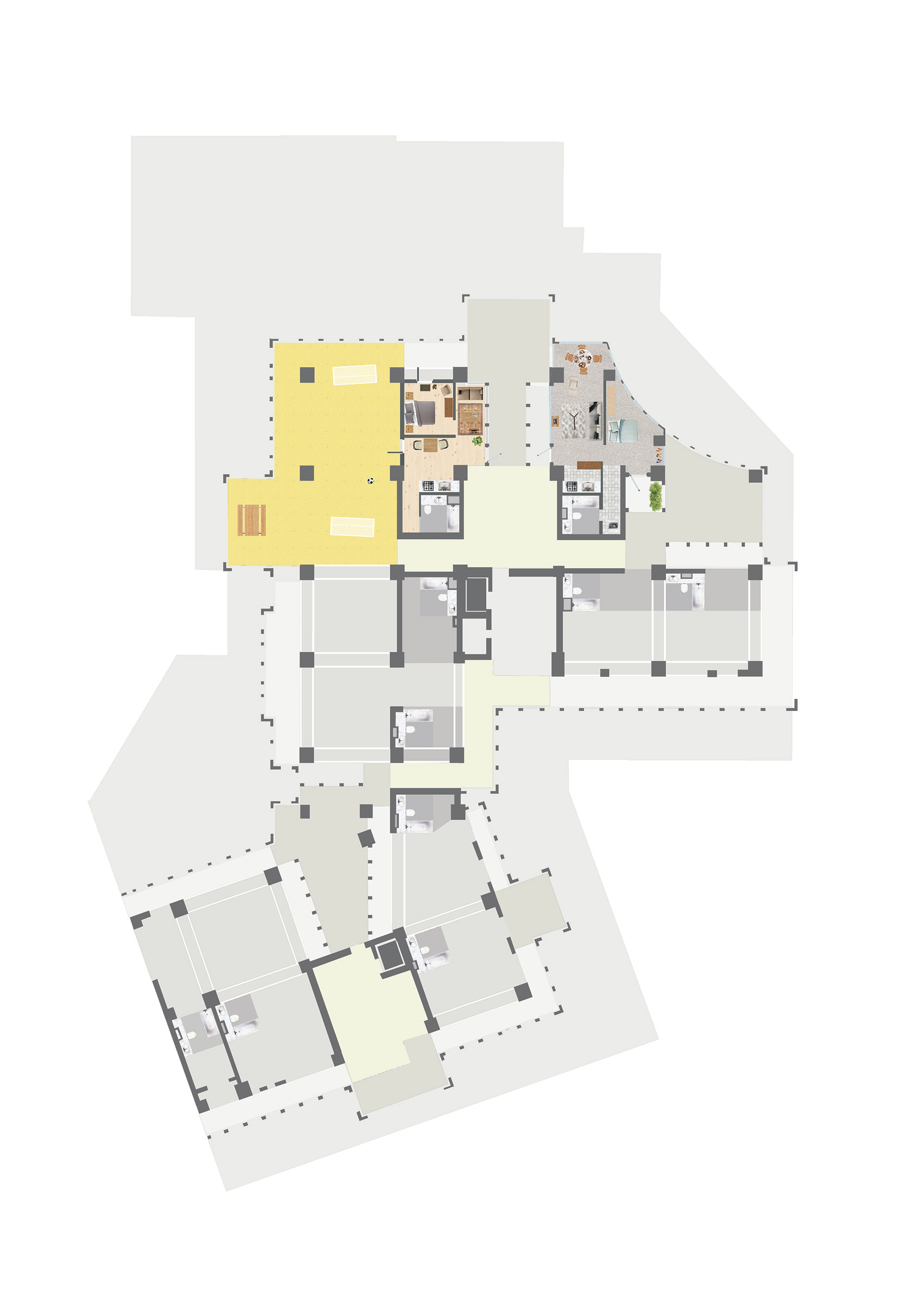Principled Flexibility (2017)
_ Masters Project ( Political Architecture : Critical Sustainability -- KADK, Copenhagen )
The project proposes a framework for flexible housing which formalises current development practices, facilitates self-build initiatives and reactivates residential constructions abandoned after small developers collapse under economic pressures. It focuses on one particular residential tower which hosts 10 families in very inappropriate conditions and proposes a different architecture to replace the current design, which works around the structure and services and allows the developer to continue their current methods of procurement. These methods include selling properties before the building is completed and selling properties as empty shells for the new resident to complete themselves. The project capitalises on the financial and social benefits of these development practices but systemises them to improve the current undesirable outcomes. This project acts as a catalyst for a broader ambition and an example for how these existing buildings could be renovated to provide flexible homes under viable conditions. In this example only bathrooms and kitchens are installed with breeze block partition walls. These function as service cores. The plan is divided into plots according to the location of these service cores. These plots overlap to form a plan of hybrid ownership, where sections of floor area are either owned privately or collectively between 2 or 4 other households. These plots are organised around courtyards which are double height spaces placed throughout the tower. The perimeter of the floor slab is offset with a metal frame which envelopes the building, flowing in and out of the courtyards to create a narrow threshold where households can extend their properties or change use by customising their facade with a variation of panel options. The result is a residential tower with shared amenity space and residential flexibility. It reintroduces the opportunity for shared living, through courtyards, back into the development of housing and nurtures the self-build culture which has phenomenologically arisen out of necessity, crisis and strictly prescribed living conditions. It is a versatile look at how we might rethink ownership, not just of land but of building and floor area as urban density continues to increase.




